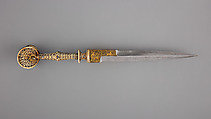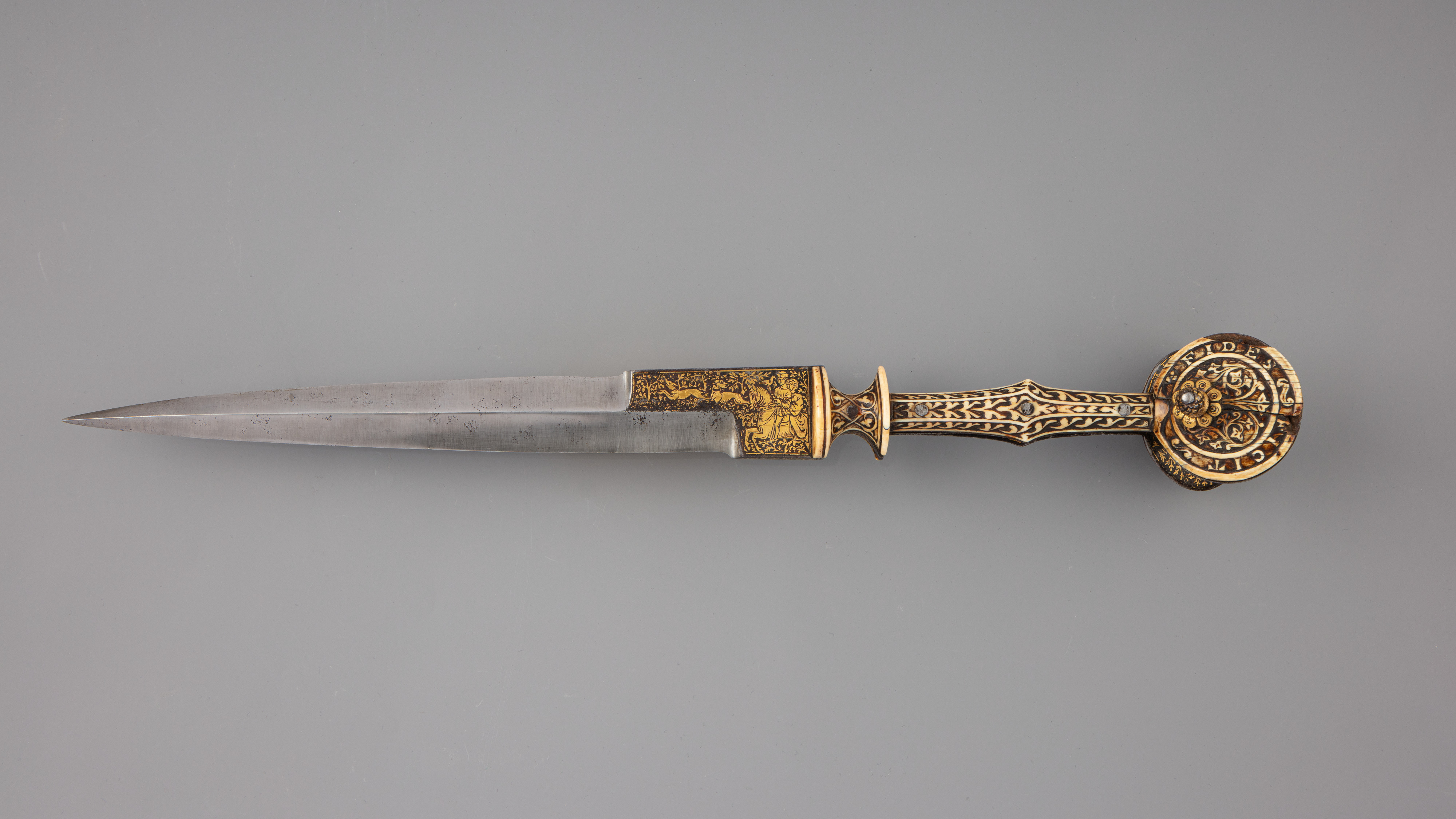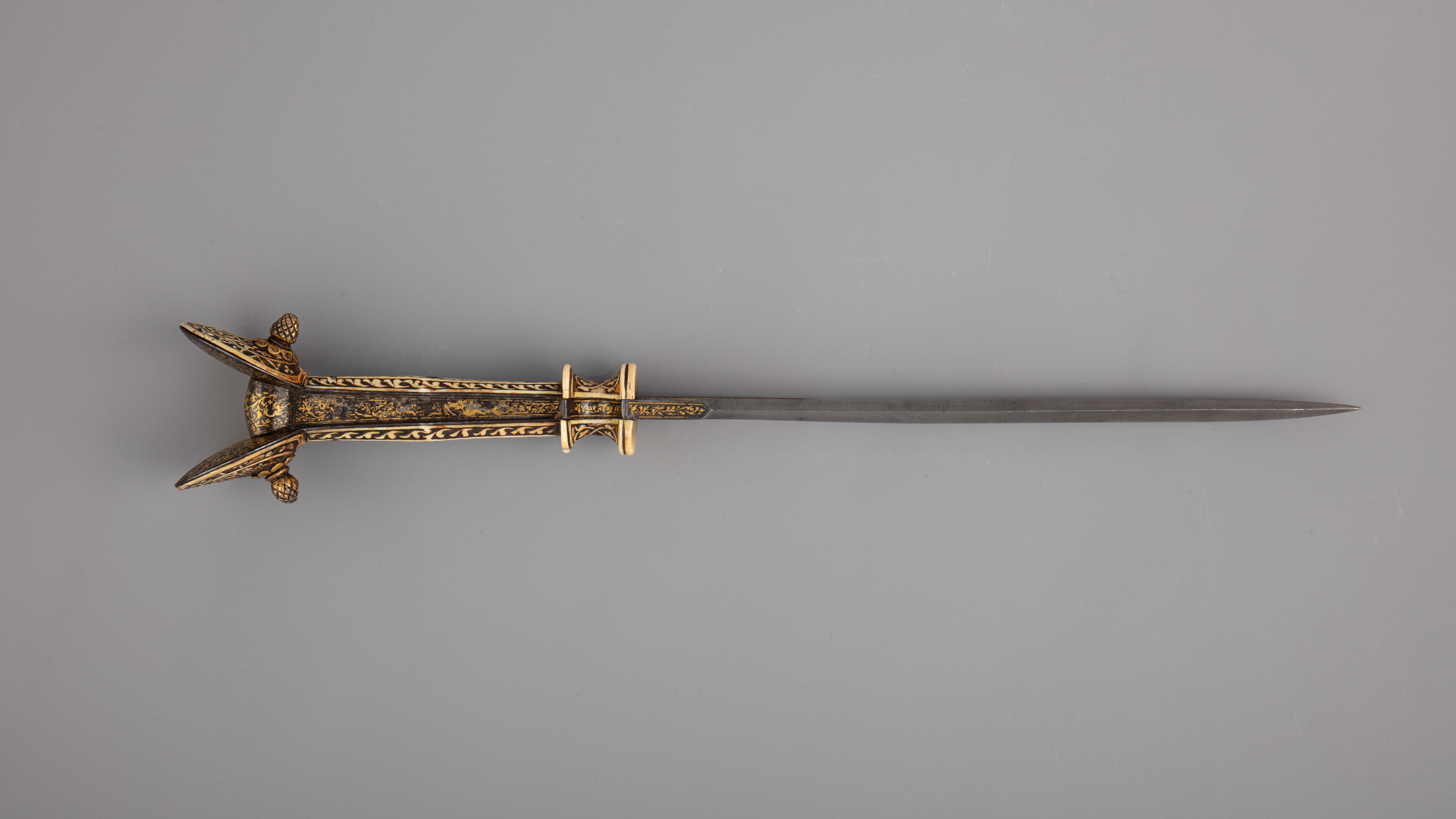Eared Dagger
Not on view
The grip is characterized by the large circular "ears" at the end of the tang. To these ears and to the sides of the tang are riveted plaques of bone which form the ears, grips, and spindle-shaped guard. These plaques are carved with foliage, with one ear inscribed AVDA FORTVNA the other FIDES FICIT. The ears are attached through shims to the tang by rivets secured by large buttons of gilt steel in the form of pine cones, with engraved and gilt rosette washers. The straight blade is double edged, with edges of unequal length; the base of the blade is of thickened rectangular section and extends asymmetrically toward the upper edge. The tang, the base of the blade, and the shims are deeply blued and damascened in gold with a variety of hunting scenes set against a dense foliate background.
The exotic-looking ear dagger appears to have been introduced into Europe through Spain and is apparently of Moorish origin. One of the earliest documented examples, now preserved in the Real Armeria in Madrid, belonged to Baobdil, the last Moorish king of Granada, whose reign ended in 1492. Diego de Çaias, a cutler and damascener of iron of presumed Spanish origin who worked both for Francis I of France and Henry VIII of England, is known to have made several daggers of this type. One of these may be the dague à oreilles (ear dagger) which is recorded among the French royal arms in an inventory of 1561, and another may be the one that appears in a portrait of young Edward VI of England as Prince of Wales, about 1546. An ear dagger of similar appearance, signed by Diego, is in the Metropolitan Museum (acc. no. 39.159.1), but is decorated in a style quite different from this example.
Hunting scenes of distinctly French style decorate this ear dagger. The scenes of huntsmen blowing horns and carrying boar-spears and of hounds chasing stags are based upon woodcut illustrations decorating a series of Books of Hours published by Simon Vostre in Paris in the 1490s and first two decades of the sixteenth century. The artist responsible for designing those illustrations is anonymous, but he has been identified by Souchal as the author of the famous Hunt of the Unicorn tapestries at The Met Cloisters in New York.
Though the woodcut sources for the damascened decoration of this dagger date from the late fifteenth century and early years of the sixteenth, the dagger itself was probably made in the years around 1540. The prominent metal button and washers attached to the ears appear to be late features and are found on a masterpiece drawing submitted on May 7, 1538, to the goldsmith's guild in Barcelona by Cristofol Joan, and on the dagger in the portrait of about 1546 of Edward VI mentioned above.
Due to rights restrictions, this image cannot be enlarged, viewed at full screen, or downloaded.
This artwork is meant to be viewed from right to left. Scroll left to view more.





